Browse our collection of Mark Catesby birds! The hand-colored engravings are antiques, coming from Dr. Seligmann’s German and French editions, which published centuries ago, from 1748-1776.
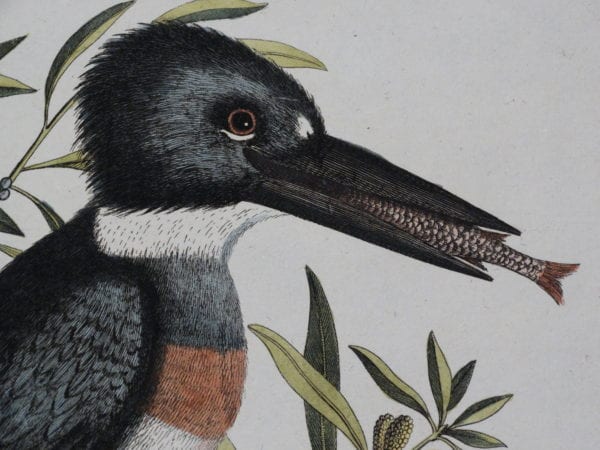
Mark Catesby Birds! Authentic & Antique! Hand-Colored Engravings, 250 years old.
Mark Catesby Birds. This gallery is comprised of Mark Catesby engravings. Catesby illustrated waterbirds and perching songbirds, the sorts you may find at birdfeeders. This famous work is on North American species of birds. Too poor to have a separate illustration for the bird from the foliage, Catesby illustrated the birds with flora or botany of the region. The beautiful combination of life like birds and foliage is classic today.
Catesby was in the Carolinas, Virginia, Florida and the Bahamas in the 1730’s. The Dr. Seligmann German Edition published beginning in 1748, while the Amsterdam Edition published from 1771-1776 in the Netherlands. Stunning watercolors illuminate the 250-year-old, copper-plate engravings on rag. Each old print measures about 10 1/4 x 17″ though there are a few that are 9 1/2 x 15 1/2″ Click here to contact us. or pick up the phone and call us at 413-245-4197.
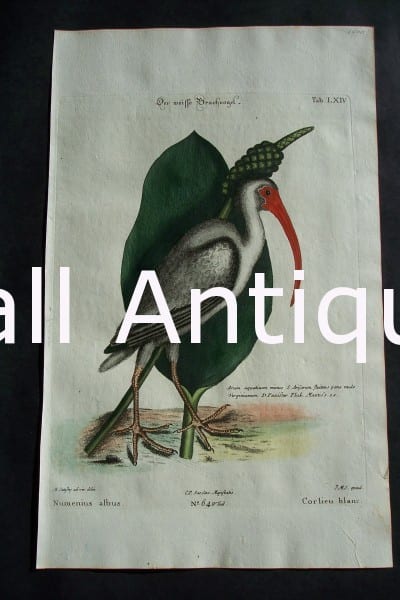

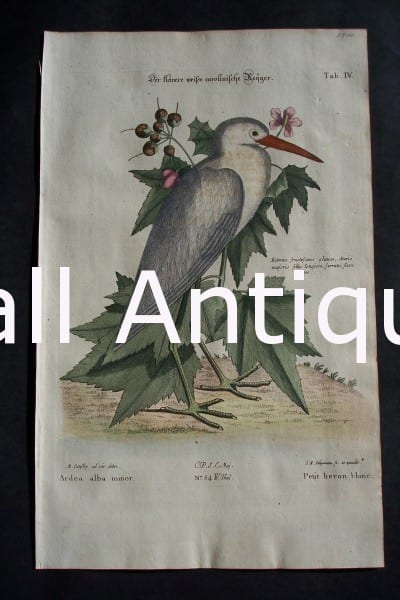
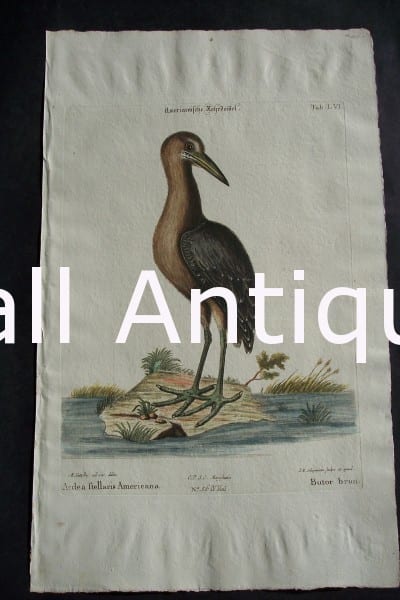



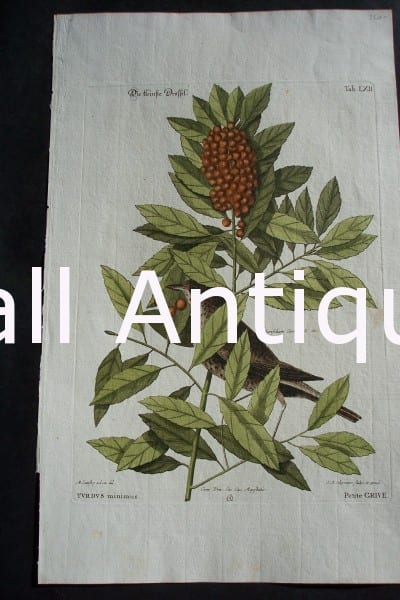

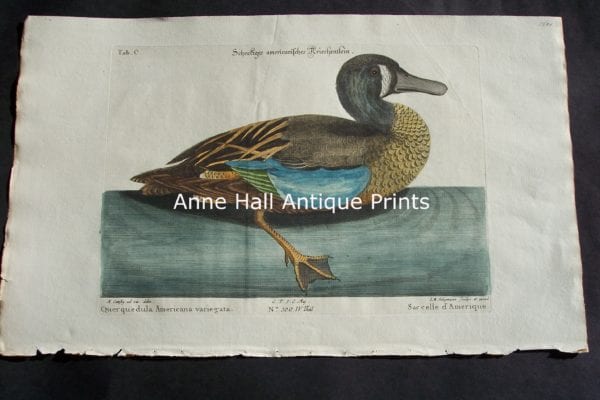
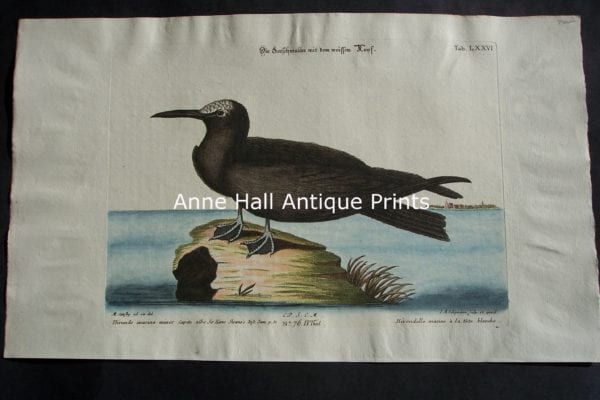
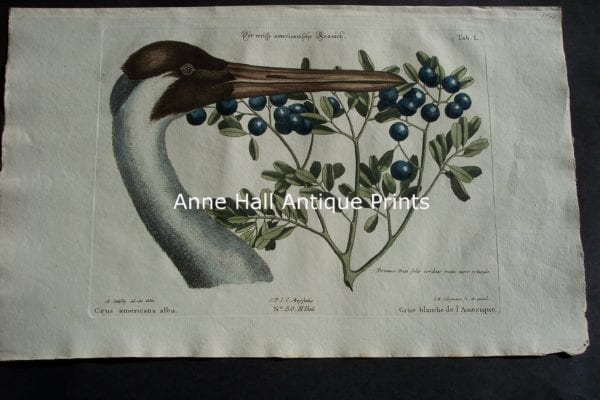




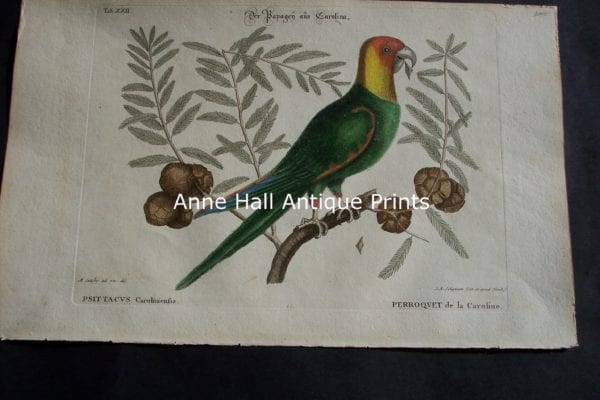



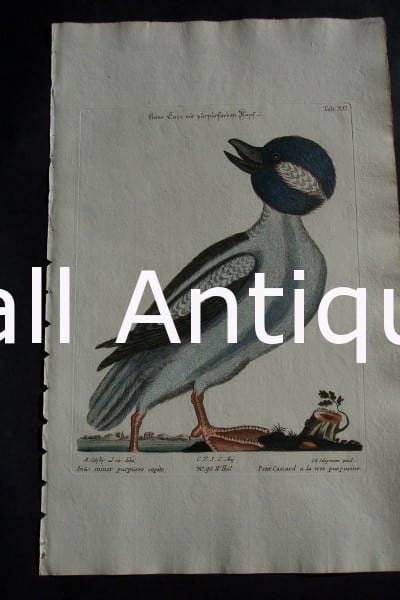
Do you want to learn more antique prints, from centuries ago?
It was a laborious craft of all those involved in producing something like these, antique Mark Catesby bird engravings. First Catesby had to travel, find and identify the species. Second the illustrations had to be meticulously drawn, with the best accuracy. The image would be transferred onto a copper plate and engraved with burins. The paper was hard to acquire, and the engraver would have to re engrave another plate after just 300 strikes. The water colorists would die at young ages, due to licking tips of their paint brushes. Yet these old prints still exist in super fine condition and exemplary condition. That is mostly due to the quality of the rag paper. Paper was made of rag right up through the turn of the 20th Century. Coming from linen, flax, and literally textile rags, NOT TREES, there was no acid in the paper. It was very expensive to acquire, inconsistent, etc. But the basis of plates that could sustain, through hundreds of years.
Additional ideas where to learn more about this naturalist & more:
Find out more from Audubon Society: The Great Catesby: America’s “First” John James Audubon? | Audubon I believe Catesby saw Merian’s work on insects, in a book, perhaps another naturalist’s. Mark Catesby’s style mimics those of Maria Sybilla Merian’s. See the exceptional work of Maria Merian, a woman entomologist and artist: View the amazing work by Maria Sybilla Merian and her exquisite depictions of insect transformations.
Contact us! Phone: 413-245-4197
Email: anne@annehallanti Thank you for visiting Anne Hall Antique Prints!
